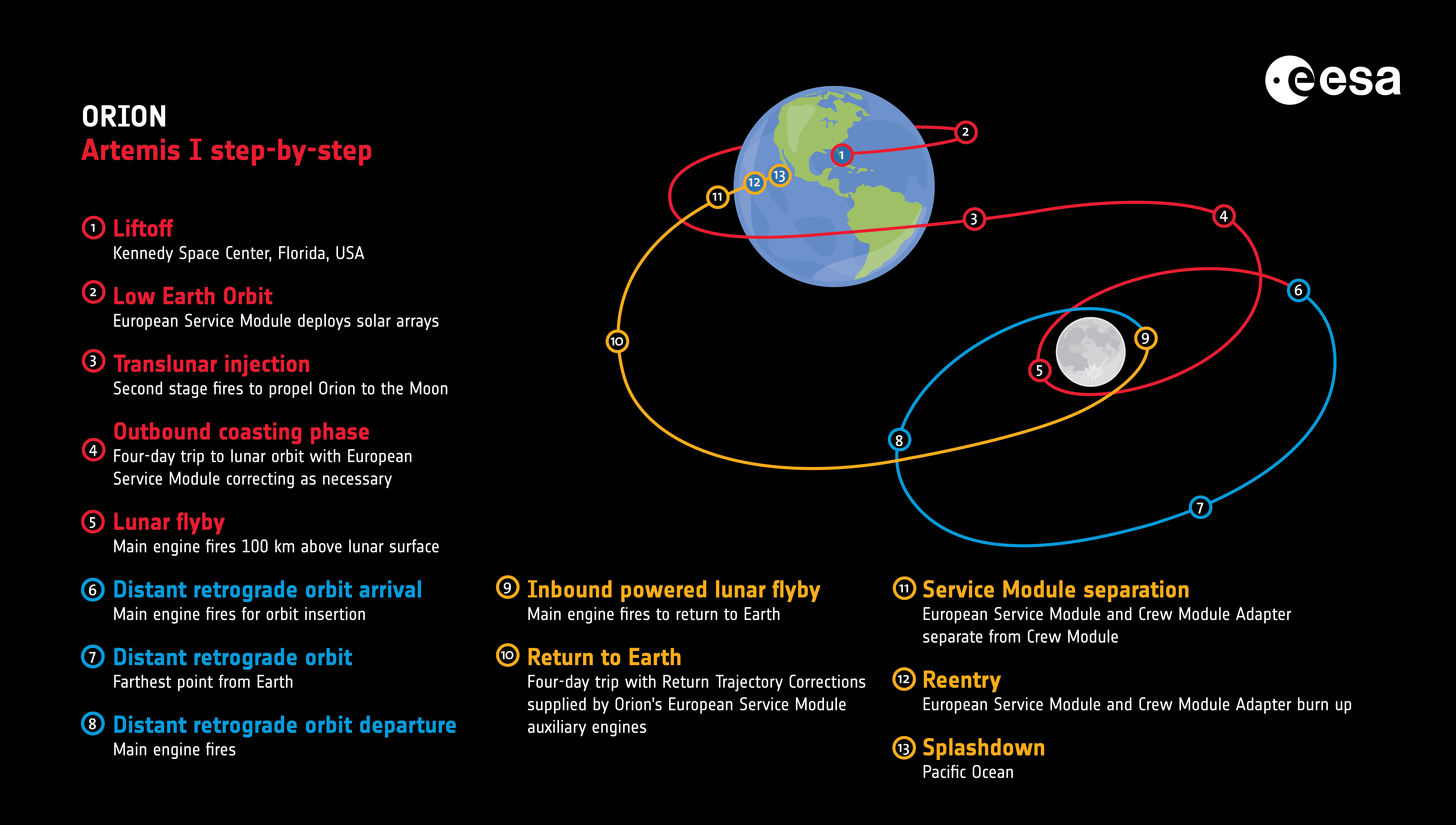Artemis I mission sets its sights on the Moon

NASA’s Space Launch System rocket, carrying the Orion spacecraft and European Service Module, is ready on the launchpad! Copyright: NASA-J. Kowlsky
29 August 2022
29 August 2022 will be a special day for space exploration! A huge Space Launch Systems rocket is scheduled to blast off from the Kennedy Space Center, carrying with it NASA’s Orion Crew Module and its European Service Module. Their mission, called Artemis I, will take them to the Moon and back!

The silver cone is the Crew Module, while the cylinder behind it, complete with solar panels, is the European Service Module. Copyright: NASA
It is all part of an exciting plan to send astronauts to the Moon (for the first time since 1972), to asteroids, and, eventually, even to the planet Mars. To do this a new spacecraft is needed, called Orion. This has a Crew Module, which can carry four astronauts. Attached to the Crew Module is the European Service Module. This contains all the water and oxygen that the astronauts will need, as well as giving the Crew Module power, ensuring that it is a comfortable temperature, and keeping it moving in space. If you imagine the Crew Module is like a train carriage carrying passengers, the European Service Module is the train engine, taking Orion to its destination and back! The European Service Module is a European Space Agency project, designed and built by some of the best scientists and engineers that Europe has to offer.
This upcoming Artemis I mission is a test, so it will not be carrying astronauts. Instead, it will be remote-controlled from Earth. This is to make sure everything is working properly and safely before sending humans on this long space journey. The Orion craft will travel almost half a million kilometres from Earth – which is further than the Moon! -- before returning to our home planet.
Although hopes are set on a 29 August launch, bad weather may delay this. Two backup dates have been set: 2 September and 5 September. The mission itself will last between 20 to 40 days, and should end with the Crew Module splashing down in the Pacific Ocean.
If all goes well for Artemis I, then Artemis II will see astronauts fly inside the Crew Module, supported by the European Service Module. This is a very exciting time for space exploration, with European specialists helping to push the boundaries of what is possible!
Cool fact: The European Service Module is made from more than 20,000 parts!





